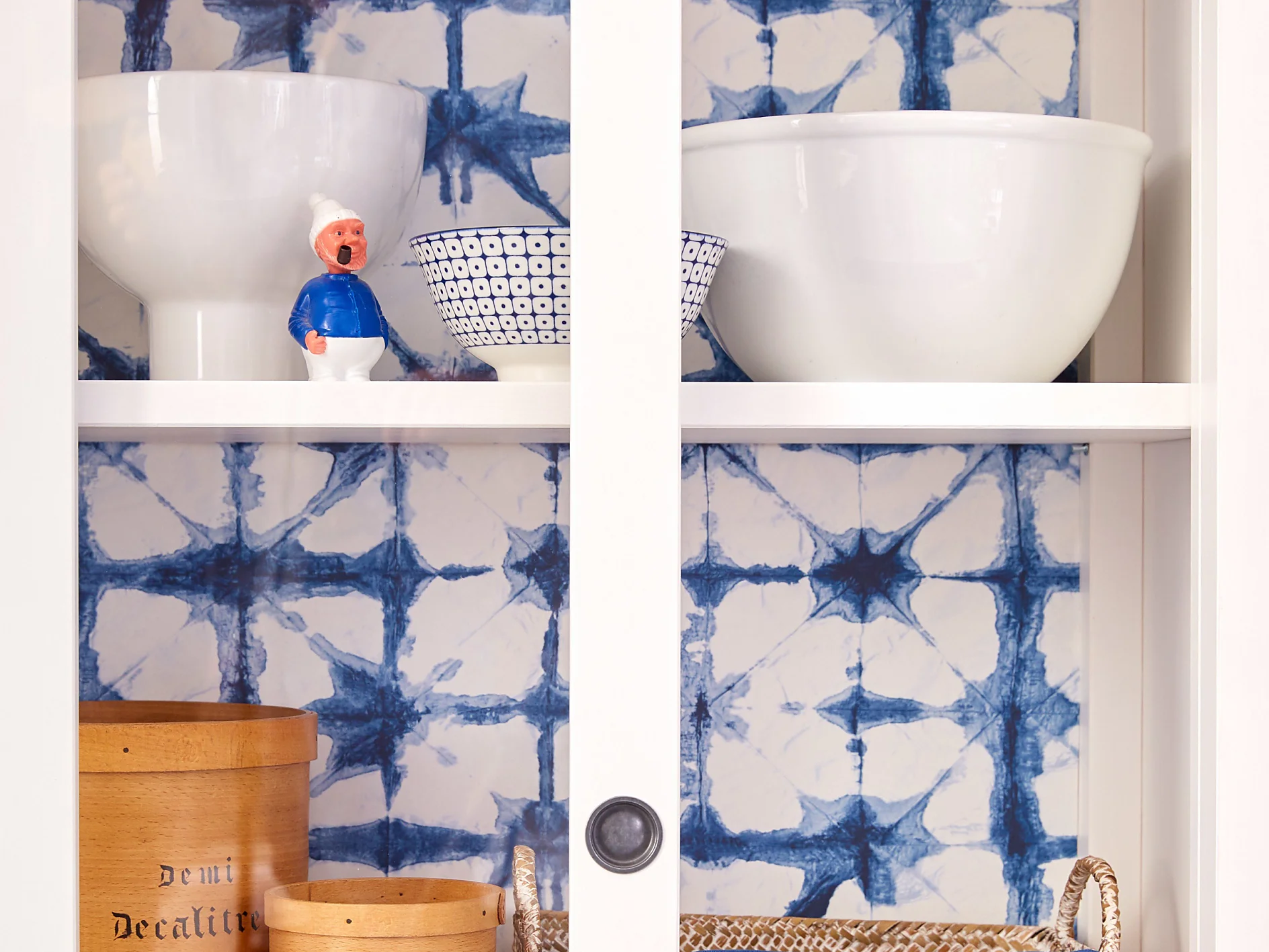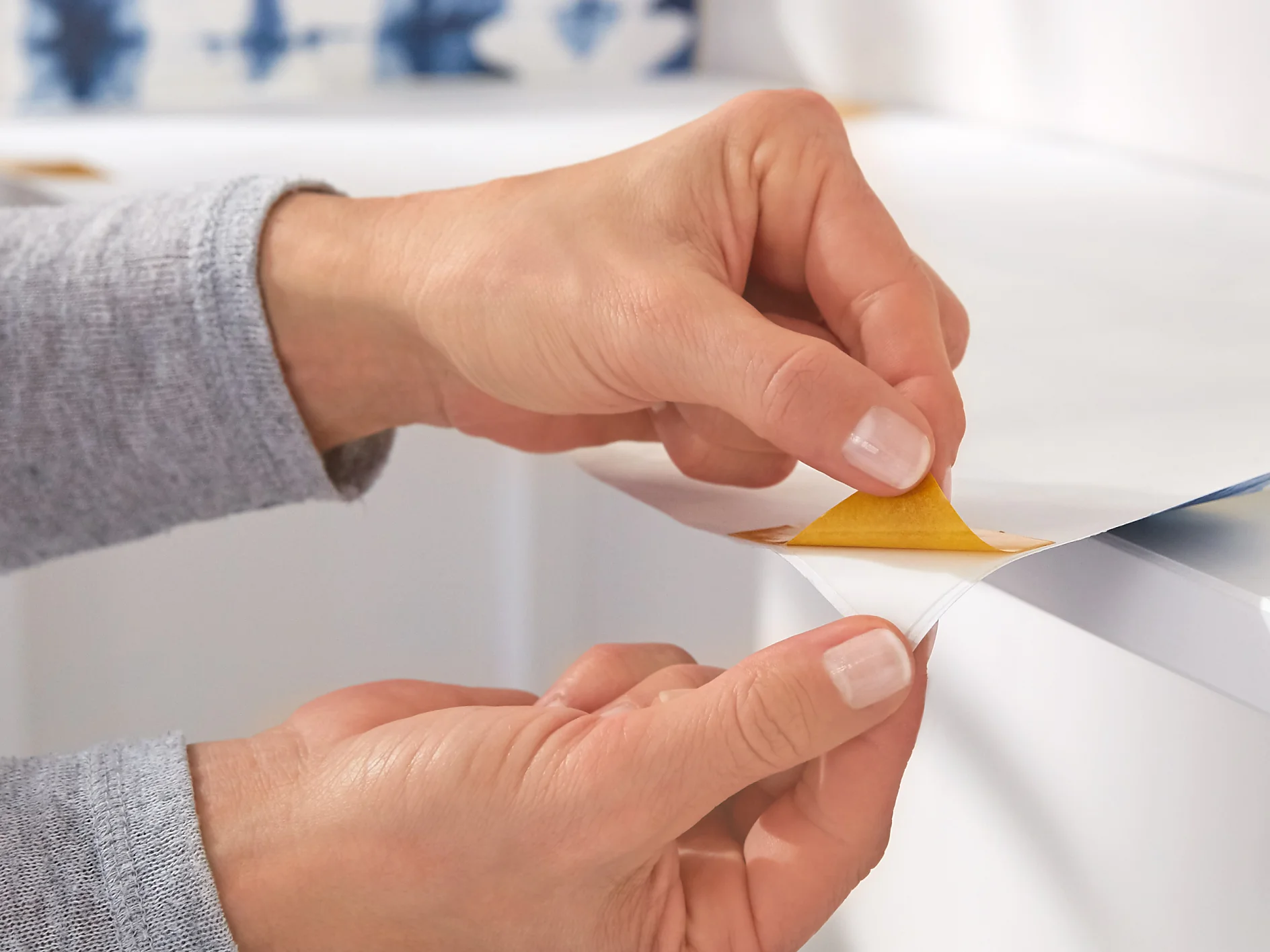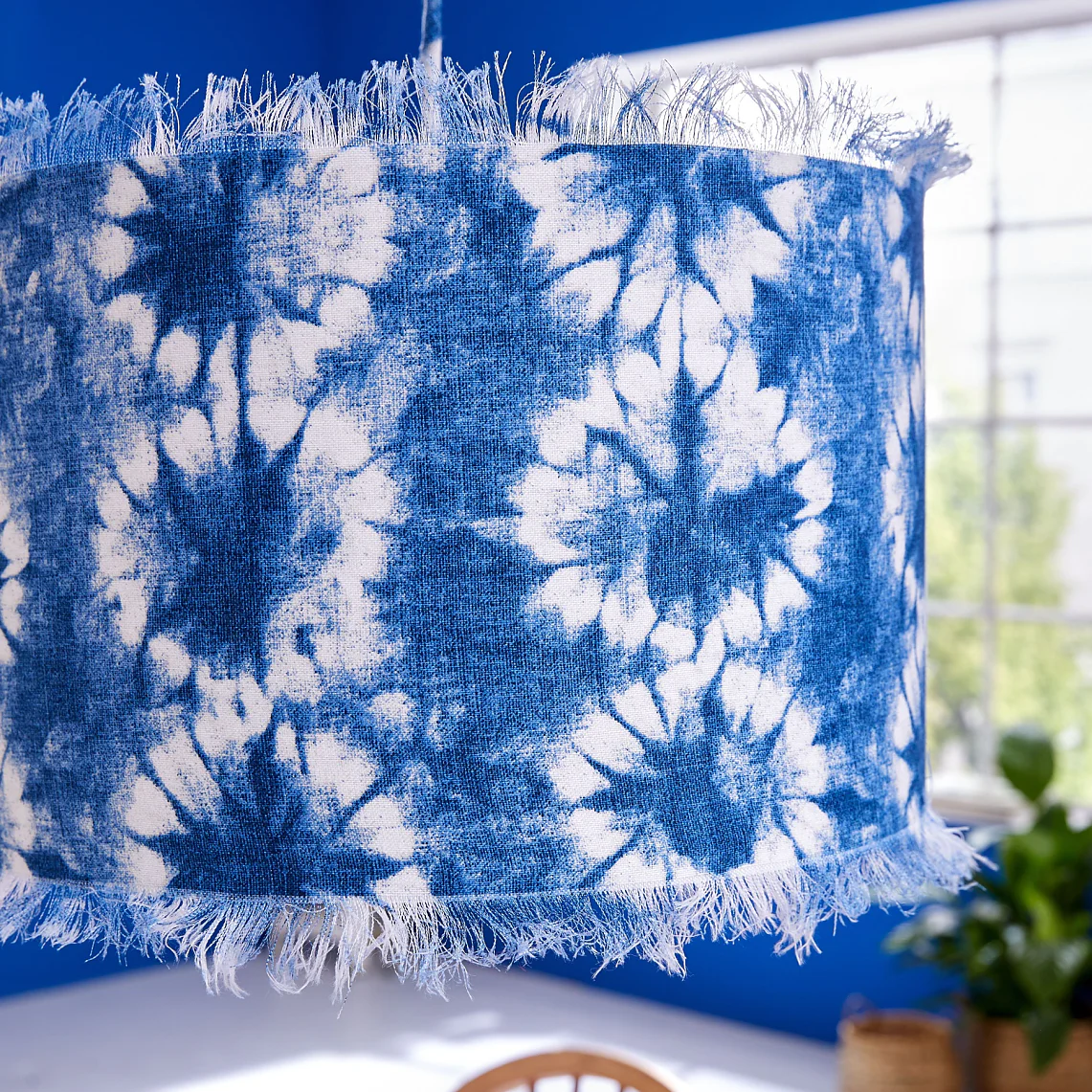A white dresser is a welcome basic piece of furniture, but not necessarily an eye-catcher. We would like to change that, because there is no room for boring items in our home and this summer, we love indigo blue!

The Blue Living Wonder
Technologies
Out of the blue! No, we don’t talk about unexpected surprises. This is simply a suggestion for all those of you who love customized and trendy living accessories.
© tesa
"I love easy upcycling of furniture. A rather unadorned piece may soon turn into a new favorite item."
DIY expert
DIY living trends for your home
With a smart trick, we transform a plain dresser into the center piece of our living room. And we manage to integrate our two favorite summer trends: indigo blue and batik!
We only need a little time, space, and a nice wallpaper to cover the back wall. The bravest among us will even paint the wall behind the dresser in a bright blue. This creates a great contrast and we’ll dedicate even more space to our favorite color.

© tesa

© tesa
Instructions
Complete instructions and many more ideas are available here:

© tesa
What is Batik?
Batik is a textile dyeing process that originates from Indonesia, where patterns and decorations are created with liquid wax on a variety of fabrics, such as cotton, linen, silk etc. During the following dyeing process, the fabric parts covered with wax are not affected by the dye bath and thus retain the original tint. Today, when we talk about batik in fashion and furnishings, we generally mean a technically similar process. This usually prevents the fabric from coloring through by tying it with a cord, rubber bands, cable ties or wire. Thin fabric can also be knotted by itself. Color transitions can be achieved through multiple passages and differently colored baths. This technique is called Shibori in Japan and tie-dye in the English-speaking world.